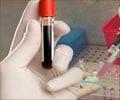US scientists moved closer to finding the AIDS vaccine in an important breakthrough that captured the clearest image yet of a protein which allows the deadly HIV virus to attack human immune cells.

The development could potentially pave the way for a vaccine, according to the findings published in the US journal Science.
"In order to develop a vaccine, you have to understand what bits on that very important trimeric protein can be recognizes by broadly neutralizing antibodies," said Scripps Institute cell biologist Bridget Carragher.
"And in order to understand that, you need to understand what the structure of the thing looks like.
"Then once you do, you can start designing a vaccine that will mimic that thing and elicit an antibody response and get the human being to fight the real virus when it comes along."
Although sophisticated antiviral drugs have been used to manage HIV infections in many developed countries, a vaccine against infection has proved elusive.
Advertisement
The delicate structure of Env has hampered efforts to obtain the protein in a form that allows for the atomic-resolution imaging necessary to fully understand it.
Advertisement
However the researchers were able to engineer a version of the Env trimer, or three-component structure, that has the stability required for atomic-resolution imaging.
The scientists were then able to study the Env trimer using cutting-edge imaging and electron microscopy.
The use of X-ray crystallography allowed researchers to examine the Env trimer in more detail than previous attempts.
The data also shed light on the process by which Env assembles and later shifts shape during infection, and also allowed researchers to make comparisons with protein envelopes from other deadly viruses such as flu and Ebola.
Source-AFP














